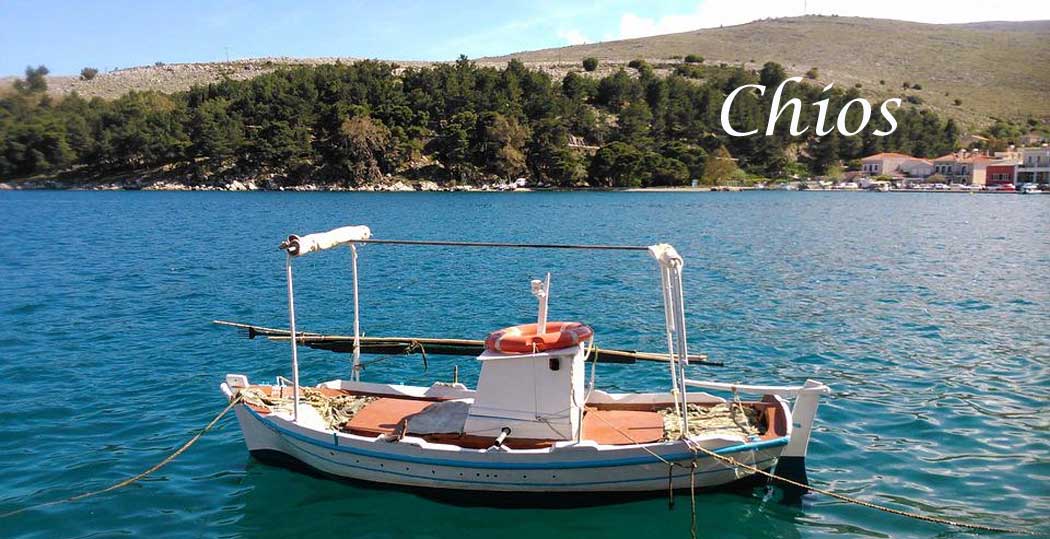Information about the island of Chios Greece
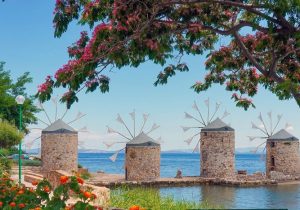
Initially, the port’s view, with its unkempt apartment buildings, might disappoint, but a stroll through Chora and the rest of the island will more than compensate: Kampos, with its mansions and citrus groves, medieval villages, and beaches of wild beauty. It is estimated that at least a week is needed to fully explore the island, and having a car is essential.
The main highlights of a trip to Chios include Masticochoria, Anavatos, Volissos, and Kampos. The latter, known for its guesthouses in old mansions – once country houses of Genoese aristocrats and the wealthy Turks and Greeks who followed – serves as an excellent accommodation base close to the city. In recent years, the number of guesthouses has also increased in other villages.
Pyrgi, Mesta, Olympoi, Armolia, and Vessa are viable alternatives as a base. Walking through their narrow streets, you’ll feel as though time has stood still, yet these are not mere village-museums; they are vibrant and full of life.
Another option is to choose a village in the north as your base. From Volissos, you can visit the castle town of Anavatos, known as the ‘Mystras of the Aegean’, and the beautiful stone village of Avgonima. Chios is increasingly becoming a destination for alternative activities, with agencies organizing nature trips – from spring walks in orchid-filled gorges to participating in the cultivation of mastic.
In the past, Chios was known as the queen of the oceans and the sea, celebrated for her countless ships and fearless sailors. Historians have said that having Chios as an ally at sea would assure victory in war.
Chios is also renowned as the island of mastic. Legend has it that when the Romans captured St Isidoros, the exhausted saint began to cry, and his tears, falling onto the pavement, transformed into aromatic mastic. This legend explains why the mastic tree, prevalent in other parts of the Mediterranean, produces mastic only in Chios. Due to its lucrative mastic trade, Chios experienced invasions by the Macedonians, Romans, Byzantines, Venetians, Genoese, and a long Ottoman domination from the mid-16th century until 1912.
Mythology
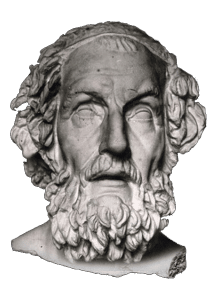
The traveler Dapper states that Chios means ‘serpent’ in Syriac, leading to its other name, Ofiusa, due to the abundance of snakes. Another name for Chios was Pityousa, likely due to the many pine trees, particularly in its northern part. Yet another name was Ariousha, derived from the “aryon” tree, a type of oak-holly, which covered much of northwestern Chios. Other names included Aethalis (mentioned by the prefect Pliny) and Arethusa (noted by Italian Ruberto Valentino and Hieronymus).
Prehistoric tradition speaks of two figures, Oinopion and Makara, as the island’s first inhabitants. Oinopion, the first mythical king of Chios of Cretan origin, introduced vine cultivation and the production of the renowned Ariusian Wine. This wine, praised as nectar-like, sweet, healing, aromatic, and easy to digest, linked Oenopion to his father, the God Dionysus, and his mother, Ariadne, daughter of the King of Crete, Minos. Oinopion passed his love for wine to the people of Chios. The myth of Orion, the most famous mythical hero of Chios, is also connected with Oinopion, son of the God Poseidon and Euryale.
History
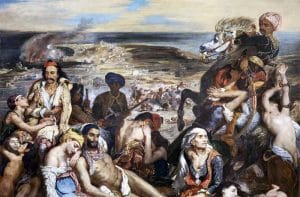
The ancient city of Chios, built approximately on the same site as the modern one, acquired wealth and prosperity. Phrases like “Chios Gelos” and “His life” indicate the comforts and bliss that prevailed in the city.
The Peloponnesian War disrupted the balance in the Aegean, significantly affecting the economy and trade. Chios, as a member of the Athenian Alliance, fought alongside the Athenians until their defeat in Sicily, after which it defected from the Alliance. The Athenians laid siege to the island, but the Spartans prevailed, establishing an oligarchic regime. In 386 BC, Chios joined the Second Athenian Alliance. During the years of Alexander the Great and his successors, Chios maintained a flourishing economy, evidenced by archaeological findings, including a Macedonian Tomb in the Archaeological Museum of Chios.
Alexander the Great, in his letter to the Municipality of Chios (exhibited in the island’s Archaeological Museum), appears as a regulator of the political situation, advocating the restoration of democracy.
During the Roman Empire, Chios was subordinated to the Romans. The island suffered greatly during the Mithridatic wars due to its pro-Roman stance. Unfortunately, successive disasters and major earthquakes have left few traces of ancient Chios’s wealth and prosperity.
In 1912, the Greek army liberated Macedonia and Epirus, and then the General Staff of the Army decided to liberate the Aegean islands. Various Chiots had previously contacted Prime Minister Eleftherios Venizelos, seeking assistance in their liberation. The Greek fleet, led by the brave Hydraian Pavlos Kourouniotis, undertook this task, liberating Lemnos, Thassos, Imbros, Samothrace, Psara, and Lesbos. On November 11, 1912, the fleet, with 3 cruisers, two destroyers, and 3 transports carrying 2500 soldiers, arrived outside the port of Chios. The people of Chios joyfully welcomed the army, confident that they would finally shake off the Turkish yoke. That year, Chios unified with its motherland, Greece.
Geography
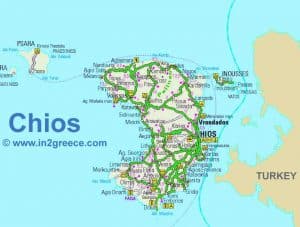
Chios also has a large expatriate community in London and New York. Its main exports include mastic, oil, figs, and wine, and it is internationally renowned for the size and quality of its shipping fleet. Administratively, along with the islands of Oinousses and Psara, it forms the prefecture of Chios, with a population of 53,817 inhabitants. The capital of the prefecture is the city of Chios, also called Chora.
Beaches

Chios combines natural beauty with a variety of beaches, offering a unique experience for all visitors. Whether seeking peace and relaxation on sandy beaches with crystal-clear waters or engaging in sea sports, Chios caters to all preferences. Most of these beaches are in isolated locations, offering a chance to enjoy nature and the tranquility of the landscape. For enthusiasts of sea sports, many beaches provide ideal conditions for swimming, water sports, and fishing, and are also popular with families and friends seeking fun and relaxation in the sun and sea.
The island also boasts a range of beaches with stunning cliffs and caves, perfect for those seeking adventure and exploration. These beaches are excellent for snorkeling and fishing enthusiasts.
What to do
When considering how to spend your time on Chios, you will discover a plethora of fascinating day trips and excursions. The island boasts some of Greece’s most captivating medieval villages, significant Byzantine monuments, a variety of intriguing museums, and poignant reminders of the islanders’ calamitous 19th-century rebellion against Ottoman rule.
Begin your exploration in Chios Town, with its atmospheric old quarter nestled within the walls of a 9th-century Byzantine kastro, bordered by a deep, dry moat. The narrow lanes of this ancient castle are lined with Ottoman-era houses, among which you’ll find decaying Turkish baths, an unused mosque, fountains, and gravestones of Turks, Armenians, and Jews.
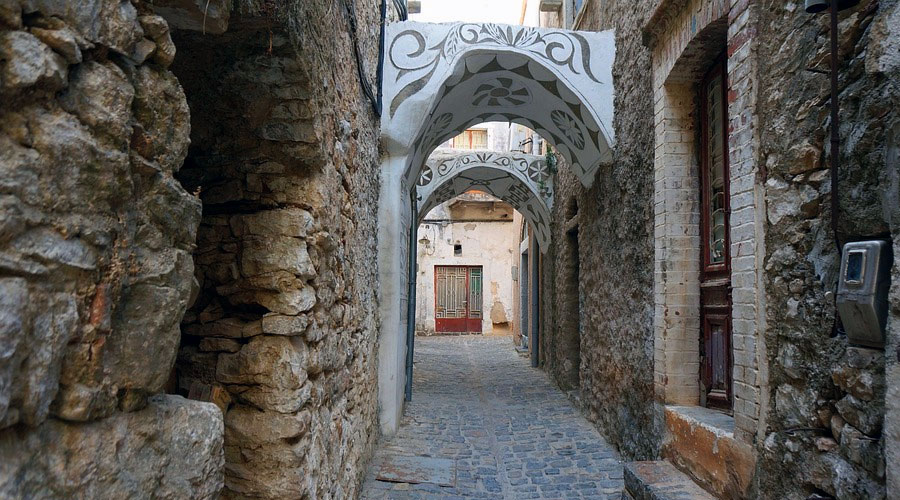
The Giustiniani Museum, located in a 15th-century mansion within the kastro, showcases restored 15th-century Byzantine wall paintings, a 5th-century floor mosaic, and other religious artworks.
For an enthralling glimpse into traditional island life, visit the Philip Argenti Museum on Korais, next to the cathedral. Named after a local historian and aristocrat dedicated to documenting Chios’s culture, traditions, and history, the museum’s collection features local costumes, wooden utensils, portraits of the Argenti family, and a replica of the famed Delacroix painting, the original of which resides in the Louvre Museum in Paris.
The 11th-century monastery of Nea Moni, spectacularly situated in the island’s centre. Located 14 kilometres west of Chios Town, in a stunning mountainous setting, this monastery is celebrated as one of Greece’s finest Byzantine buildings. Its interior is adorned with beautiful mosaics, whose red, gold, green, and blue colours remain vibrant after a millennium.
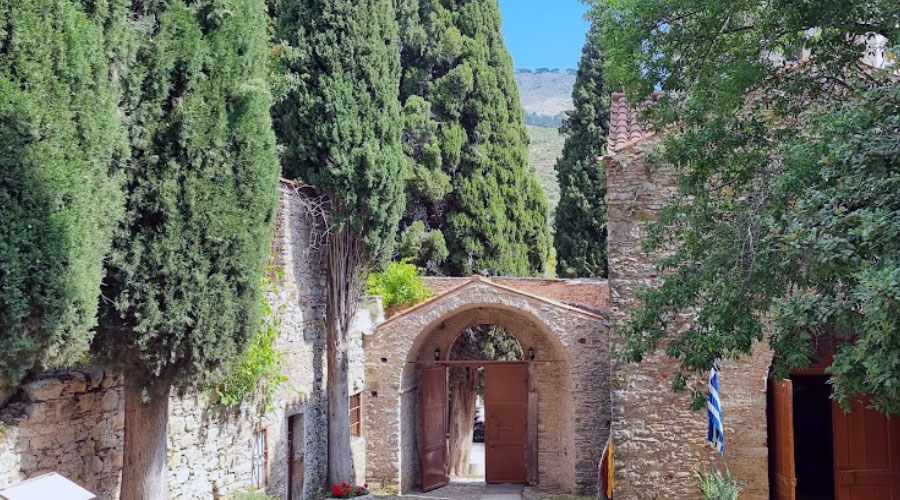
A ‘must-see’ during your stay on Chios is the mastic villages (Mastichohoria) in the south. These enchanting medieval villages, established in the 14th and 15th centuries, were centres for mastic gum production, the island’s primary export for centuries. Mastic gum, derived from the resin of unique local bushes, was historically used in cosmetics, paints, perfumes, and medicines.
These villages were uniquely designed to deter pirates and other adversaries eager to exploit the profitable gum trade. Their outer ring of houses formed thick defensive walls, while fortified towers at each corner and a labyrinth of narrow, buttress-arched streets led to a central stronghold, the villagers’ final refuge during attacks. A distinctive feature of these villages is the elaborate decoration on many buildings’ external walls. Pyrgi, 26 kilometres southwest of Chios Town, is the most prominent and impressive of these surviving mastic villages.

Gastronomy and local food
Chios is renowned not only for its famous mastic and its derivatives but also for a plethora of other products and recipes. The island produces various types of butter and cheese, including the well-known mastelo, along with sheep, goat, and cow cheeses, both privately and through a new cooperative. It offers fresh or preserved vegetables, including Armathia tomatoes and pickles, and unique fruits like waterboulas and reglotes (locally known as vanillas and koromilas), sour cherries, and petrokerasas.
Chios is also celebrated for its exquisite ouzos and liqueurs, as well as fresh fish and seafood.Visitors can enjoy renowned pastries made from dried figs and the local drink “souma,” produced traditionally in cauldrons at autumn’s end. This drink is available in specialized traditional food shops or tavernas. Chios ouzo, distinguished by its unique taste and traditionally produced as “kazanisto,” is another highlight.
Several distilleries in Chios continue their family traditions, offering not only ouzo but also superb liqueurs. Additionally, the island produces fresh (unfiltered and unpasteurized) beer, made from select malt varieties and whole hops, without preservatives or additives, and stored exclusively in refrigerators. These are just a few of the local products and special flavours awaiting discovery in Chios.
Local Culture and Customs
Chios’s culture is rich and multifaceted, reflecting the island’s centuries-old history and distinctive traditions. The island hosts numerous traditional celebrations and events, with the Rocket War during Easter being one of the most famous.
The traditional dances and music of Chios, heavily influenced by its rich history, feature musical instruments like the lyre and tambourine at local events. In modern times, Chios melds tradition with the contemporary. Despite evolving into a modern tourist destination, the island’s customs and practices from the past continue to be deeply ingrained in the identity of its inhabitants.
Folk art
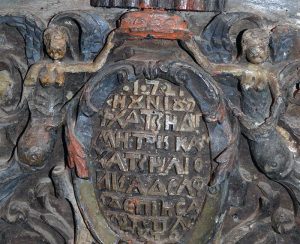
The focal point of Chian folklore is the Folklore Museum of Kallimasia. This museum offers visitors a unique journey through a path of tradition and folk art, bridging the past and its lifestyle with the present.
At the heart of the island’s traditional pottery art lies the village of Armolia, known for its long-standing production of utilitarian ceramic ware. The village showcases not only these functional ceramics but also an array of decorative pieces, either crafted in its traditional workshops or imported from other studios across the country.
A prime example of wood carving artistry can be seen in the famous Chian temple screens (iconostases), which gained widespread popularity from the 17th to the 19th century across the Aegean and the coast of Asia Minor. A distinctive feature of these screens is the elaborate depiction of the Crucifixion at their apex, complete with symbolic elements of the Passion of Christ. Notable examples of this art form in Chios include the temple screens of the Taxiarchis in the fortified village of Mesta (1833) and of Saint Demetrius in Vessa (1840-41).
The Vigles of Chios ( Medieval Watchtowers)
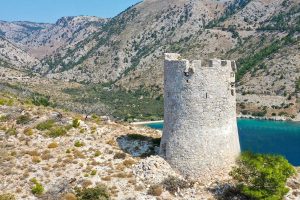
At this particular time three or four villages spent together and built vigils on the shores of the island, at a distance of 3-4 miles from each other, sending to each of them two guards. These vigles were denser in the places where they were offered for landings from the sea, as is the case on the southern coasts of the island. According to the calculations in Chios there were more than 50 vigles in the perimeter of the island.
The vigles of northern Chios are almost destroyed so that they cannot be located. On the contrary, the viglas of the south, but also of the west of Chios are in a clearly better condition and some are almost intact (vigla of Pachy in Tigani Sidiroundas, vigla of Livadi Meston, vigla of Trahilio Lithiou, vigla of Elinda). But the first among the vigles is the great vigle of Koulas inside the castle of Chios. This particular vigle has a semi-cylindrical shape unlike all other vigles which have a cylindrical shape.
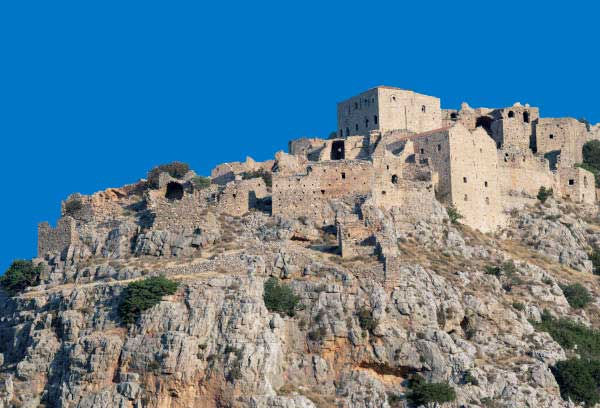
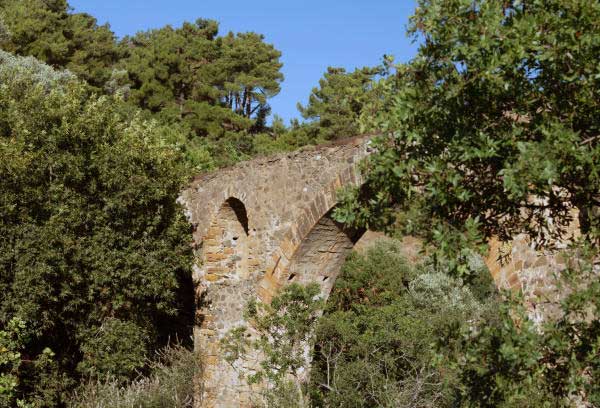
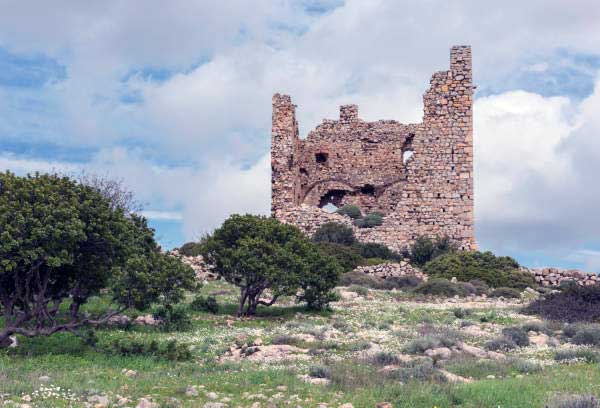
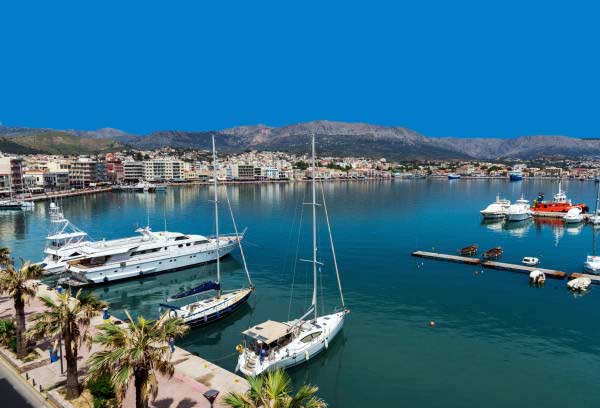
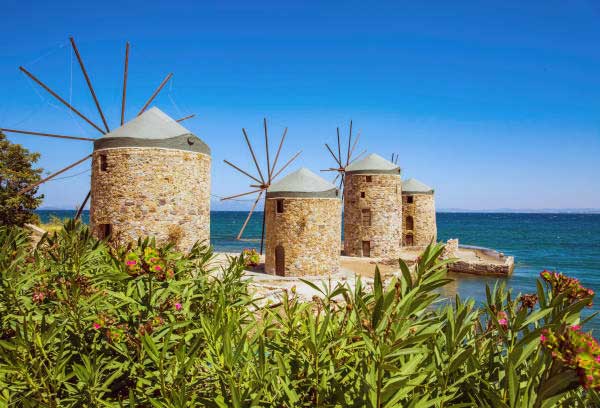
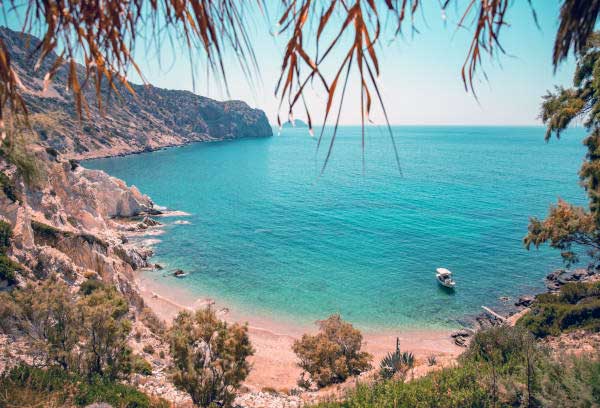
Villages and Towns
Chios, an island full of history and tradition, has a number of villages that reflect the island’s rich culture and unique local identity. Each village carries a distinct charm, from the picturesque alleys and traditional architectural forms to the abundant stories and customs that have been preserved through the generations.
Each village has its own history and character, offering a unique experience. From the quiet and secluded villages to the more lively and touristy, there is something for every type of visitor. The hospitality of the inhabitants, the rich gastronomy and the living tradition make the villages of Chios a destination not to be missed.
Chios Town
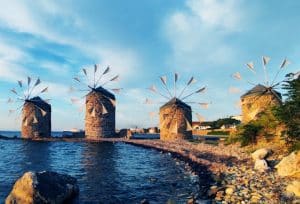
Strategically located in the middle of the island’s eastern side, Chios maintains a visual connection with the coasts of Asia Minor. This positioning highlights its historical ties with Ionia. Archaeological evidence confirms that the island has been inhabited since 6000 BC, and the city of Chios itself was established by the Ionians shortly before 1000 BC.
Consequently, the region’s history spans over 3,000 years, marked by periods of both prosperity and decline. In contemporary times, Chios thrives as a bustling city with active economic, maritime, and commercial sectors.
It’s also an educational and intellectual beacon, boasting various educational institutions at all levels, libraries (such as Adamantiou Korai), and the Homeric Spiritual Center. This center is a hub for conferences and councils on diverse topics, as well as cultural events, theatrical performances, and a variety of artistic activities.
Despite the impact of the 1822 destruction, the 1881 earthquake, and the extensive post-war reconstruction, the city still retains many intriguing elements for visitors. These features are evident both in the city center and its surrounding districts.
To alleviate the burden of traffic in the city center, visitors are advised to explore on foot, parking their vehicles in one of the nearby lots (Farkena, Nautikos Omilos in the South, Ramnis Street, Evodos at the northern city entrance).
A stroll along the central port’s promenade (Prokymaia) is highly recommended. It’s one of the city’s most vibrant areas, bustling both day and night, lined with cafes, ouzo bars, and restaurants.

Mesta
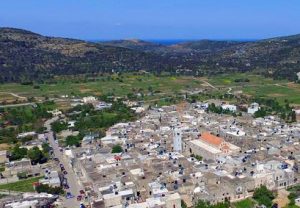
The village, which dominates a small valley, was built in the Byzantine years, in a pentagonal and closed quadrilateral shape with labyrinthine inner streets, while the houses that were built on the outside played the role of a wall, so they had no windows to the outside.
The Genoese improved the fortification of the village, which was subject to raids by pirates. At the outer corners of the village there were small circular towers. The defense was done from the roofs, as was the retreat towards the central tower. Vaulted arcades with portholes for bows were formed in the places where the perimeter of the defense was limited to a wall.
The special element of the village is its architecture, as the houses are built very close to each other, while they communicate with each other through very narrow, covered streets, the “domes”. Defensive reasons imposed the possibility of movement on the roofs of the houses, i.e. their single level throughout the settlement.
The streets that connect the central square of the tower and the gates of the settlement are few and narrow. From them start other, even narrower ones that end in a dead end or a cul-de-sac and from which the houses are accessed. It is worth visiting the church of Palaio Taxiarchis with its wood-carved iconostasis of the 19th century, which is an excellent example of the local style.
In the central square is the church of Megalos Taxiarchis, the largest church on the island, which was built on the site of the central circular tower of the castle. Mesta is an attraction for tourists, both for its special architecture that refers to the Middle Ages, and for the special natural beauty of the area, since some of the most beautiful beaches of the island are nearby.
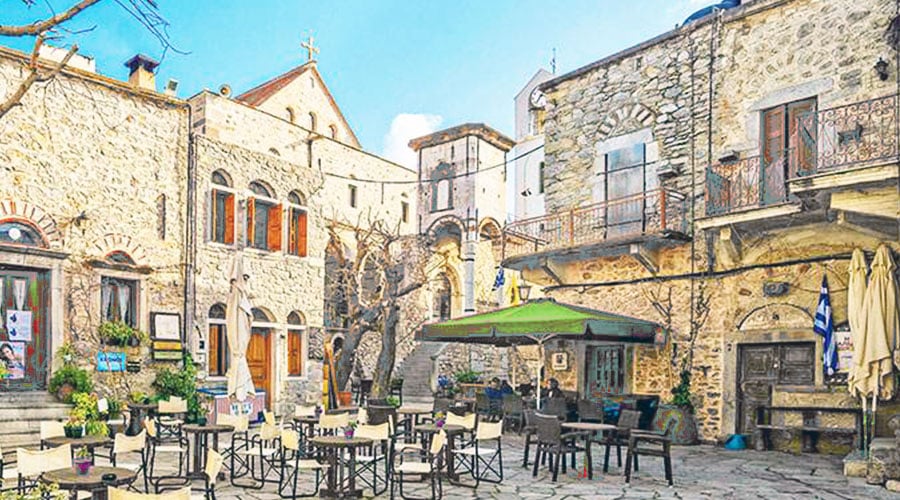
Pyrgi
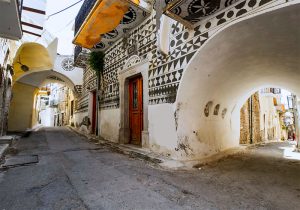
It is an impressive technique, where the carvings are done by hand and involves black sand that is whitened and then scraped. This is how the famous black patterns on a white background, simple or complex, are created, which is kept alive to this day.
The houses are joined together and connected to the opposite ones with impressive arches, while the outer wall of the most distant buildings is a medieval enclosure. It is worth walking through its narrow picturesque streets as well as visiting the Byzantine church of the Holy Apostles, which dates from the 13th century. In the center of the village there was a defensive tower, part of which is still preserved today, which functioned as a shelter in case of attack.
Volissos
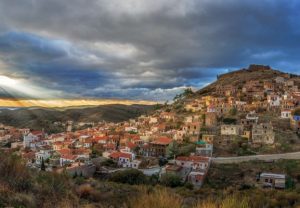
The village is built on the site of a small ancient city called Volissos or Voliskos and is mentioned by tradition as the place where Homer lived. The houses are made of stone and preserve their old architecture. Windmills and ruins of some watermills as well as many Byzantine churches decorate the surrounding area. Near the village is the Holy Monastery of Saint Markella (patron saint of the island) as well as several nice beaches..
Kardamyla
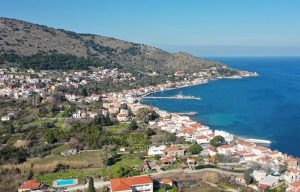
Ano Kardamyla is the old village built on the steep hill “Vouno tis Grias” and is characterized by its traditional architecture, narrow streets, cobbled alleys and stone-built houses.
Marmaro is built on the sea bay at a distance of 2 km and is characterized by the many stately houses of shipowners and sailors. Walking through its narrow streets you feel the typical island atmosphere of Chios. A distinguishing feature of Marmaros is the statue of the Sailor of Kardamylos which is located in the port square.
In Kardamyla, in addition to the beautiful and clean beaches, the visitor can see the ancient settlement of Spilia, the church of Agios Nikolaos, as well as other small churches that are full of the offerings of sailors’ families.
Vrontados
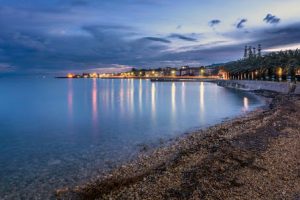
North of the city, there is Daskalopetra or Homer’s Stone where it is believed that the epic poet taught. In fact it is all that remains of the sanctuary of Cybele.
It is worth visiting the church of Agios Stefanos, the Folklore Museum, the tomb of the writer Giannis Psycharis and the monastery of Panagia tou Mersinidi where the vestments of Patriarch Grigorios V are kept. For swimming you will go to the beach of the settlement, to the popular cove of Lo and to Daskalopetra, a location with many plane trees.
Both in Brontado and in Daskalopetra there are hotels, rooms to rent and apartments, while in Agios Isidoros Sykiados there is an organized campsite. Taverns, cafes and bars fill the days and nights of vacationers in the area.
If you are interested in the cultural events, you will have the opportunity to attend the “Omiria”, speech events at Petra tou Omiros. Festivities are held on August 15th, on the feast of the Virgin Mary of Erythiani, while on September 24th the Virgin Mary of Mersinidi is celebrated and on March 25th the Virgin Mary of Moutsaini.
Kalamoti
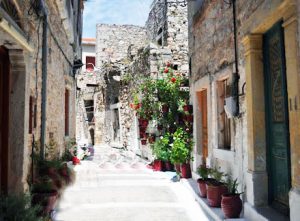
Its medieval settlement has its current form at least since the period of the maritime empire of Genoa (1346-1566) and came from the amalgamation of the scattered small villages that were located in the fertile valley of SE Chios.
The main purpose of the creation of the village was defense, which is why the village looked like a fortress and was invisible from the sea. Only in this way could the constant predatory raids of the pirates of that time (7th to 14th century) be dealt with.
Main elements of the urban organization of old Kalamoti were the closed quadrilateral shape, the continuous and unbroken defensive wall around the perimeter, the narrow streets that were covered at intervals by transverse arches and arches, the small dimensions of the common areas, the absence of trees, the abundance of churches and the continuous stone facades of the houses. Most of these elements are still visible to visitors of the old settlement.
Kambos
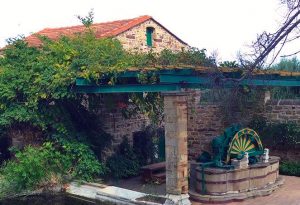
Kampos is characterized by a particular local architecture, with arched doors and windows, porticoes made of marble columns, balconies supported by small arches and huge gates, cobbled courtyards and painted ceilings, are some of the features that give the settlement an incomparable uniqueness.
You will admire the imposing mansions, unique examples of an idiosyncratic architecture, belonging to the aristocratic families of Chios and to families of noble Genoese origin who lived on the island. Many of these mansions were built during the 14th century.
The site was chosen both by the Genoese, to build their mansions in the 14th century, and by the local aristocrats in later years (Rallides, Argentides, Petrokokkinos, Calvocoresides, etc.), creating a new socio-economic network. The orchards are irrigated from wells with manganese which in the past were turned with animals but now irrigation is done by modern means.
Day trips
The island of Psara is located just 12 miles northwest of Chios. You can arrive by boat from Chios town or by smaller boat from Limia.
Today they have less than 500 inhabitants, who live in the only settlement on the island, and rudimentary tourist infrastructure.
On the north-eastern coast of Chios there are also five small islands, the largest of which is Oinousses: in ancient times they were famous for their good wine and it is believed that their name comes from the word oinos (wine in greek).
They have a small hotel, some rooms for rent, cafes, taverns and many nice beaches, while here is also one of the largest commercial shipping schools in Greece.
Their connection with the city of Chios is regular and during the summer months many travel agencies organize excursions here.
Nightlife in Chios
Chios is a destination that offers visitors entertainment for all tastes. Cafes and taverns, as well as many bars, offer many options for relaxing and carefree moments.
The center of the entertainment is the waterfront of the island, where the largest number of cafes, bars and ouzo are concentrated, overlooking the port of Chios.
Of course, there are also many options in all the touristic parts of the island, such as in Karfas, and the wider area (M. Limnionas and Agia Erimioni), in Komi, Agia Fotia, Volissos, Lagada and Kardamyla, where you can one can enjoy the entertainment with a view of the starry sky and the endless blue of the Aegean, which embraces the island from end to end. Read more
Getting around
For an optimal experience during your stay on Chios, you might consider hiring a car or motorbike, particularly as the island’s bus service is somewhat limited. While buses regularly travel to the mastic villages in the south and to popular beaches along the east coast, personal transport is essential for exploring the less populated, mountainous northern region and discovering its quiet, secluded coves.
In Chios Town, you’ll find numerous car rental firms, notably concentrated on Evyenias Handhri near the southern end of the harbour. It’s advisable to book in advance, especially if you’re planning to hire a vehicle during the weekend in the high season, when demand for rental cars surges.
Having your own transport allows you to visit the renowned medieval mastic villages at your convenience, without depending on organised excursions. A tour of these unique, fortified towns in the southern half of the island is a must for all first-time visitors to Chios.
To fully explore the northern end of the island, dominated by Mount Pelineo, Mount Oros, and Mount Aman, you’ll need a vehicle capable of handling its challenging roads. Here, the rewards are breath-taking views and a sense of adventure that only Chios can offer.
Buses
When you’re in Chios, the local buses are your best friend for getting around. Run by Chios Urban Bus Service, or KTEL Chios as the locals call it, these buses are a lifeline, connecting the buzzing city center of Chora to the quaint villages, gorgeous beaches, and the hidden historical gems scattered around the island. In the summer, when the island is buzzing with tourists, the buses run more frequently, making it super easy to hop from one spot to another. Just swing by any bus station, and you’ll find the timetables, or you can check them out online before you head out. It’s not just a ride from A to B; these buses let you see the island through the eyes of those who call it home, and that’s pretty special.
Taxis
Now, if you’re looking for a bit more flexibility, or maybe you’ve just missed the last bus, taxis are your go-to in Chios. They’re pretty easy to find, especially around Chora and the airport. They’re perfect for those spur-of-the-moment trips or when you’re heading somewhere a bit off the beaten track. Sure, they’re a tad pricier than the bus, but you’re paying for the convenience of a door-to-door service and the luxury of traveling on your own schedule. A little tip – it’s always a good idea to agree on a price before you set off, or at least make sure the meter’s on. Saves any awkward conversations when you reach your destination!
Health Services in Chios
In the field of public health, Chios offers a Public Hospital, which is located on the coastal road towards Vrontados. Additionally, there is a Health Center in Pyrgi, along with local clinics in the surrounding villages. Besides these public health facilities, there are also private clinics and independent medical practitioners operating on the island.
Visitors from European Union (EU) member countries who require necessary medical care should be equipped with the European Health Insurance Card or another valid EU document. This card or document, issued by their respective health insurance provider, partially or fully covers hospitalization costs.
For visitors from non-EU countries seeking necessary medical care, it is advisable to consult their health insurance provider before travelling. This ensures they are adequately prepared for any health-related needs during their stay in Chios.
Getting there
By Air
Chios boasts an international airport. Though small, it is conveniently located near the city. The airport welcomes many charter flights, primarily from Germany, Holland, and the Nordic countries. Regular flights are available from Athens via two Greek airlines: Aegean Airways and Sky Express. However, there are no direct flights from Italy. During summer, there are four daily flights from Athens, while in winter, the frequency reduces to two flights a day.
By Ferry
Sea travel to Chios is accessible from several ports. From Piraeus, the journey covers 147 nautical miles and typically takes around 10 hours. Other departure points include Rafina, and the Macedonian ports of Thessaloniki and Kavala. It’s important to note that ferries from Piraeus usually arrive in the middle of the night, following lengthy routes. However, a basic level of tourist reception is always available on the island, even without prior booking.
Regular connections from Piraeus operate throughout the year. In winter, there are two departures per week, while summer sees an increase in frequency. The travel time ranges from 7 to 11 hours, depending on the number of intermediate stops and the port of arrival.
The ferry route from Kavala, linking northern Greece with the Aegean islands, is also operational year-round. This crossing can take between 10 to 15 hours, varying with the chosen itinerary. In summer, Chios has daily connections with Samos, Limnos, the Dodecanese, and Lesvos.
